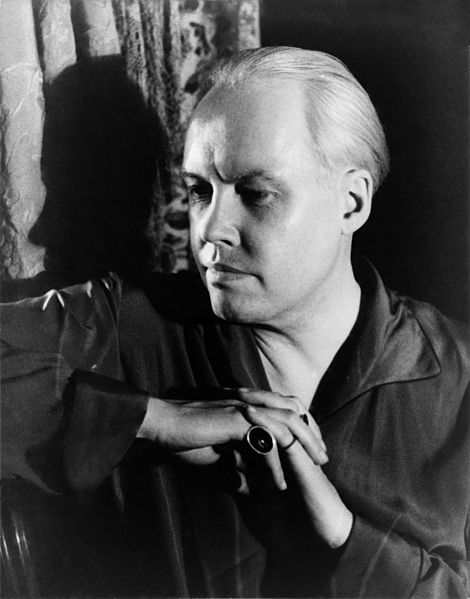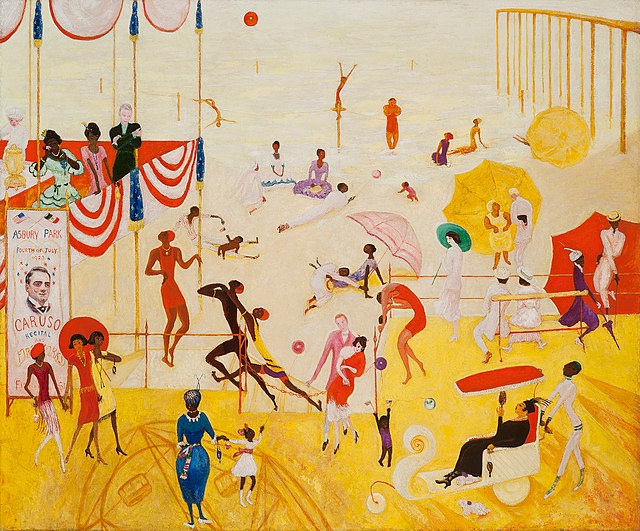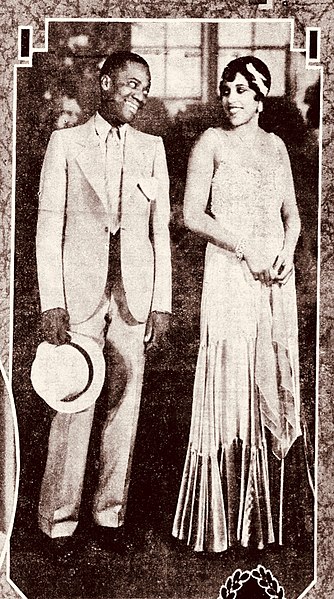Carl Van Vechten was an American writer and artistic photographer who was a patron of the Harlem Renaissance and the literary executor of Gertrude Stein. He gained fame as a writer, and notoriety as well, for his 1926 novel Nigger Heaven. In his later years, he took up photography and took many portraits of notable people. Although he was married to women for most of his adult years, Van Vechten engaged in numerous homosexual affairs over his lifetime.
Self-portrait (1933)
Van Vechten is depicted in Asbury Park South, 1920 painting by Jazz Age artist Florine Stettheimer. Amid a summer crowd in Asbury Park, the artist is under a green parasol, several of her friends are also recognizable. Van Vechten stands on the elevated structure left (black suit), Avery Hopwood (white suit, right side) talks with a woman in a yellow dress, and the Swiss painter Paul Thévanaz (red bathing suit) bends over a camera. Artist Marcel Duchamp (pink suit) walks with Van Vechten's wife, the actress
Van Vechten House and Studio, Manhattan, New York City, 2017
Saul Mauriber, after a photograph of Salvador Dalí by Halsman (1944), by Van Vechten
The Harlem Renaissance was an intellectual and cultural revival of African-American music, dance, art, fashion, literature, theater, politics and scholarship centered in Harlem, Manhattan, New York City, spanning the 1920s and 1930s. At the time, it was known as the "New Negro Movement", named after The New Negro, a 1925 anthology edited by Alain Locke. The movement also included the new African-American cultural expressions across the urban areas in the Northeast and Midwest United States affected by a renewed militancy in the general struggle for civil rights, combined with the Great Migration of African-American workers fleeing the racist conditions of the Jim Crow Deep South, as Harlem was the final destination of the largest number of those who migrated north.
Philip A. Payton Jr. founded the Afro-American Realty Company in 1903, which sought to fight housing discrimination and encourage Black migration into Harlem.
Religion and Evolution Ad
The multi-talented Adelaide Hall and Bill 'Bojangles' Robinson in the musical comedy Brown Buddies on Broadway, 1930
Poster for Run, Little Chillun








